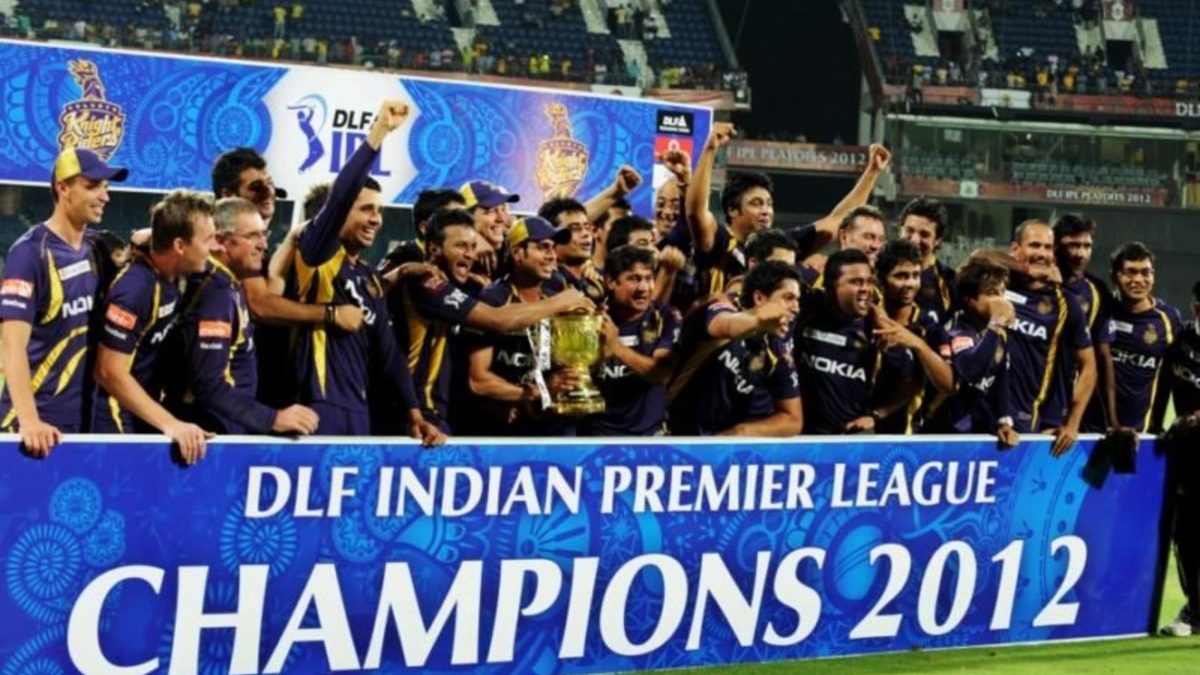
Former Indian star Aakash Chopra charts the rise of the IPL, for better for worse, for richer for poorer.
Originally published in 2014
Suggest to an old-school cricket enthusiast the possibility of a contest that’s more a six-hitting fest than a sedate affair. Suggest putting cricketers on sale like in the cattle market. Suggest pom-pom cheerleaders with perky smiles dancing to a gallery of spirited spectators. Suggest millions spent on “dressing up” the ground with sponsor hoardings and patching up their logos on player jerseys/helmets/pads/guards (perhaps even on their derrière). Well, it would be as outlandish to him as proposing to a caveman the idea of typing on keyboards instead of drawing on stone walls.
In the summer of 2008, when the Indian Premier League (IPL) was crafted and conceived, it was simply off the wall for most Indian fans. The idea of a cricket league that hosted close to a hundred T20 matches over two months, was privately owned by huge business conglomerates and fi lm stars, and which blurred national loyalties, pitting teammates against each other in return for mammoth pay packets, was way too “foreign”. In a good way though – like in the emerging India of the 1990s, when internet and satellite television invaded homes, it was seen as a sign of upward mobility and a reiteration of our growth. The IPL did similar things to our cricket – it gave us the right to talk business with non-Indian players. Most cricketers from around the world also saw this as a lucrative opportunity to play some uncomplicated cricket and go home richer.
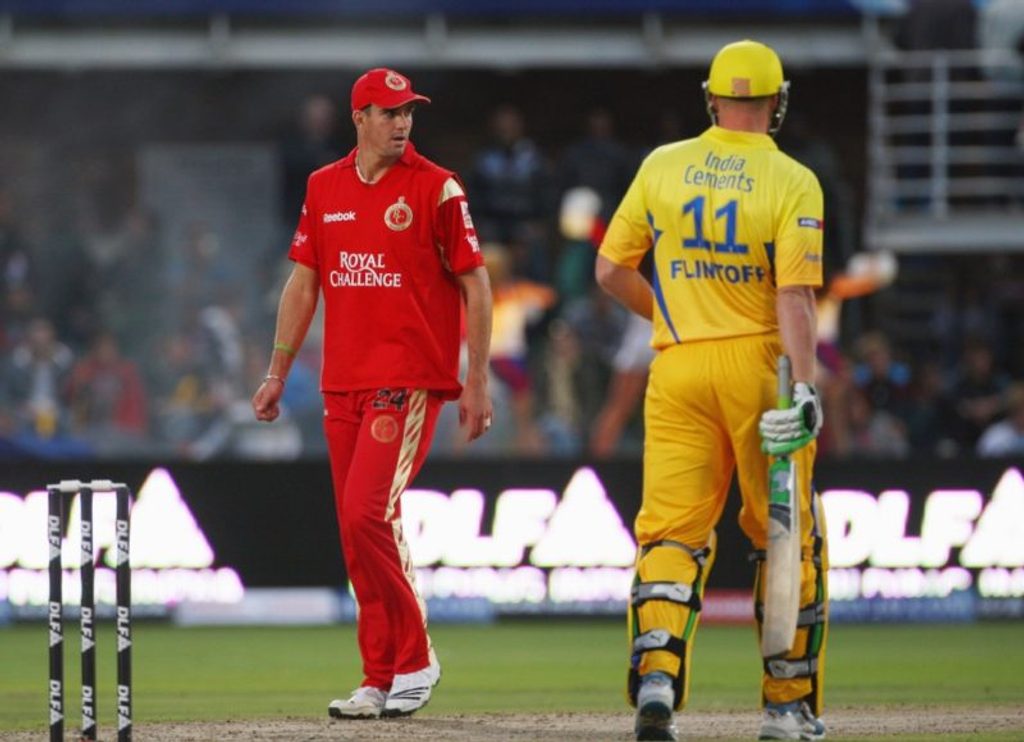 Kevin Pietersen and Andrew Flintoff were the two most expensive players in the 2009 IPL
Kevin Pietersen and Andrew Flintoff were the two most expensive players in the 2009 IPL
Cricket, especially Indian cricket, has never been the same since. The IPL has had an impact not just on how the game is looked at now, but also on the hundreds of cricketers whose lives it has transformed. Take Ashok Dinda, one of the many bowlers Kolkata Knight Riders called on for a net session. From the outset, Dinda made an impression with the pace and bounce he generated on the docile Eden Garden practice pitches. Ricky Ponting was quick to take note of his ability and asked John Buchanan to observe the rookie closely. Suddenly Dinda, who was yet to debut for Bengal in the Ranji Trophy, had bagged a coveted IPL contract. He impressed everyone in the first edition and went on to play for Bengal and India in the following years.
The IPL provided players like Dinda with the opportunity to showcase their talent on the world stage, while giving others a chance to continue chasing their dreams. Playing for your country was no longer the be-all-and-end-all – playing in the IPL was just as good.
For those who’d been hanging around for years on the domestic circuit, the league has provided an incredible platform. While years in first-class cricket only provided a world of oblivion, the IPL has resurrected failing fortunes. The likes of R. Ashwin, Ravindra Jadeja, Rahul Sharma and Yusuf Pathan may not have caught the attention of the selectors with their Ranji Trophy performances but their talent was tough to ignore after their IPL success. While the opportunity presented by the IPL is only limited to players with the skillset suited to the shortest format, it’s worth acknowledging its contribution in unearthing some fine talent for ODIs too.
I might be a cynic, but weren’t the slave auctions back in the day eerily similar?
My first memories of the IPL go back to the evening before the televised auctions were due to take place in 2008. We’d just finished supper in the quiet but elegant dining hall of the Cricket Club of India, Mumbai. My team, the North Zone, had been playing the annual Duleep Trophy at the Wankhede Stadium and was on the verge of winning it too. That season had been particularly special – earlier in the month my state team, Delhi, had won the prestigious Ranji Trophy after 16 long years. Added to that, I’d scored over 1,400 runs that season, which at that time was the second highest individual season return in the history of Indian first-class cricket.
Still, there was something bigger to discuss – the IPL and its auction.
The idea of having an auction was to ensure that every player got what he deserved. It wasn’t the first or the last time that market forces have decided the worth of the artist. But was it necessary to make a public show of the process? Wouldn’t it have been better to have the same auction behind closed doors? I might be a cynic, but weren’t the slave auctions back in the day eerily similar? Although the players, unlike slaves, put themselves forward to be bought and sold.
For the first three editions of the IPL, Kolkata Knight Riders was to be my team. I punched the air, did a little jig too – not quite as well as Shahrukh Khan, the Bollywood superstar who owned the KKR did in his films, but I was simply elated to be a part of the bandwagon, much like most of the Indian cricketers who, believe it or not, compared it with national selection. Even though the hoopla around the IPL had overwhelmed me, a question lingered in the back of my mind – why did I want to be a part of the IPL, a format which I’m pretty ill-suited for?
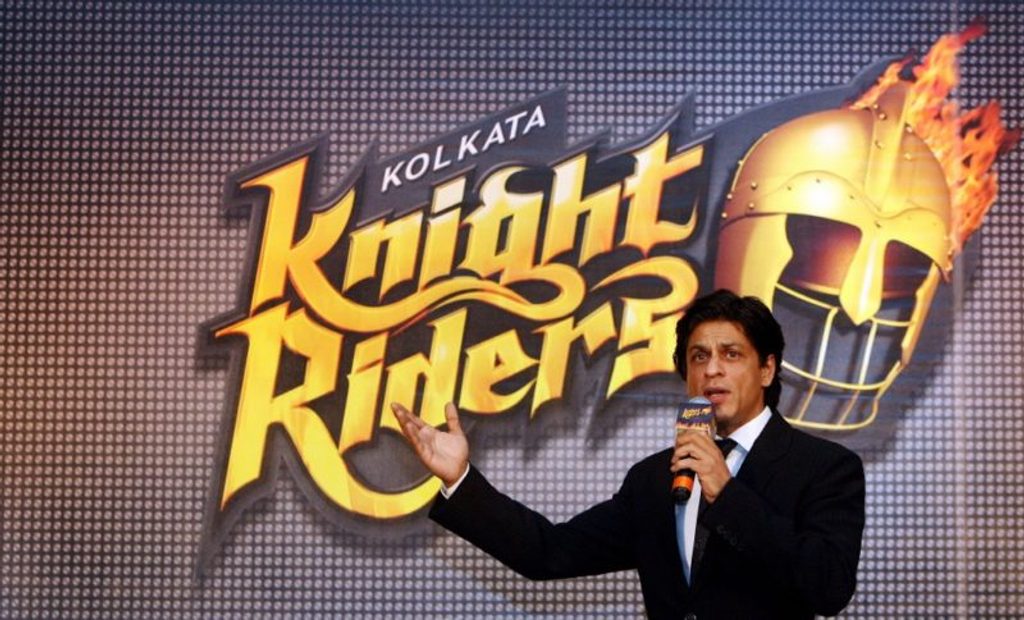 Bollywood star Shahrukh Khan at the announcement of his Kolkata IPL franchise in 2008
Bollywood star Shahrukh Khan at the announcement of his Kolkata IPL franchise in 2008
If I said that the money on offer wasn’t attractive I would be lying through my teeth. Yet that wasn’t the only decisive factor. There was a view that my brand of cricket was most suited for Test cricket. I was a batsman who liked testing technique and temperament. I liked playing “sensible cricket” and wasn’t a huge fan of the game’s slam-bang version. I guess I just wanted to challenge myself and that opinion.
A few months before, I had turned down a lucrative offer made by the Indian Cricket League (ICL). Playing for the rebel party would have meant destroying any possible chance of playing for my country. The IPL, in that sense, was legal.
Such was the IPL’s clout that those who were so vociferous in their condemnation of T20 cricket until then, came back to get a share of the pie. And those who claimed that country came first have since missed international tours to participate in the IPL – that’s what this Frankenstein’s monster has done, unabashedly. Money really does make the world go round.
***
The IPL is a melting pot of different cultures – you not only share the dressing-room with players from around the world but you also share an important two months of the year. The exhaustive itinerary ensures that players and teammates spend a considerable amount of time together. It’s those unguarded moments spent with each other that provide access to the personality behind the player.
Before I became a teammate of Ricky Ponting, I had the idea that the Australian skipper was rather stiff. But a few weeks of being on his side changed my opinion of him absolutely, and I found him to be a wonderful human being. He was always the first one to lend a hand and he never shied away from sharing his wealth of knowledge and experience. Much to my pleasure, I found out that, behind his serious façade, Ponting has quite a few funny bones! The IPL also teaches you that every team, irrespective of the nationality, has the same DNA. There’s always a serious guy, a joker, a thinker, a leader, a strategist, a calming influence and so on.
Virat Kohli confesses that the work of Ray Jennings, the coach of Royal Challengers Bangalore, and the presence of Jacques Kallis in the side, helped him immensely to evolve as a player – their coming together made possible only by the IPL. Kohli, who represents the young India, was on the verge of falling by the wayside shortly after his initiation into international cricket. Even though he had the talent and the technique to succeed, he needed perspective and guidance to take his cricket to the next level. That’s when Jennings as a coach and Kallis as a peer came to his rescue and the rest, as they say, is history.
Robin Bist, the highest run-scorer in domestic cricket the year before last, credits his success to the tips given to him by Sachin Tendulkar. After an IPL game between Mumbai Indians and Delhi Daredevils, Bist asked Tendulkar for a bit of advice. Those few minutes spent in the master’s company changed the course of his career. IPL has provided a golden opportunity for young Indian players to rub shoulders with the best in the world in a congenial environment, ideal for learning.
Once part of the cult, I realised I wasn’t the only one trying to adapt to the new world order. A long chat with Rahul Dravid during one of the games made me understand that he too was trying to piece the T20 puzzle together. For starters, the unwritten rule – that it was absolutely OK to get out after scoring a quick-fire 30 if one wasn’t able to up the ante further – was to us, the “Test players”, a bit blasphemous.
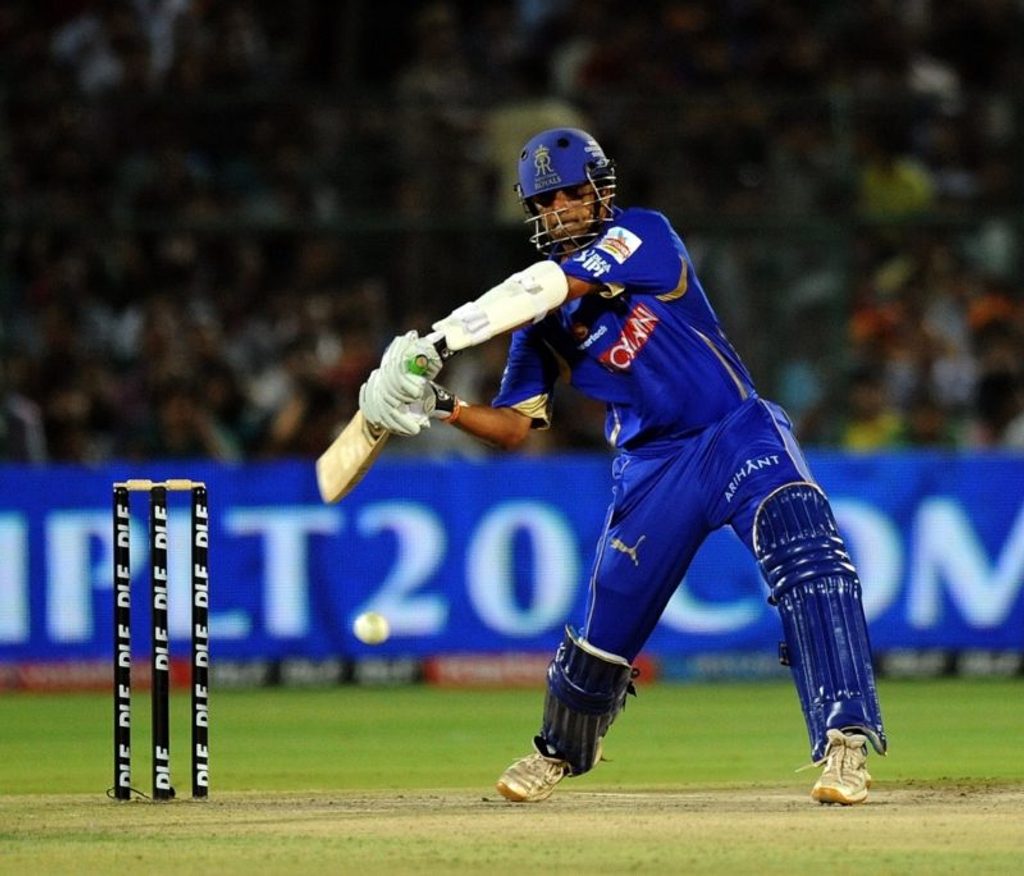 Rahul Dravid had to adapt his batting late in his career to play in the IPL
Rahul Dravid had to adapt his batting late in his career to play in the IPL
The essence of batting in T20 cricket is to be utterly fearless. The ability to “defend” might be a venerated skill in long-form cricket but in the shortest format that talent is of little use. For a Test player, throwing away your wicket wilfully is a hard idea to digest, but not in T20. In any other format, if you’ve hit a four or a six in the first couple of balls of an over, the smart thing to do is to rotate strike and breathe easy. Not in T20. If you’ve hit two fours off the first couple of balls, try and hit a few more off the remaining four. That’s the mantra most teams have followed and the IPL is treated as a 20- over slog-fest. Simple.
Although it made us sound like nagging parents, the other major concern that both Dravid and I had was the deterioration of the skill-sets required to succeed in the longer formats of the game. Since the IPL had already become “the most important tournament” in India’s domestic cricket calendar, it was perfectly plausible to believe that young cricketers would get lured by the glitz and glamour of the 50-day IPL instead of playing six months of first-class cricket.
The lack of time to prepare, combined with the dynamics of the tournament, don’t allow the IPL team physio to address these issues in the right manner
Two areas were expected to be affected the most – batting (especially opening) and spin bowling. Playing in a T20 game, a fast bowler doesn’t have to stray too far from his basics; he just has to treat it as bowling four overs at the death. But a spinner has to radically change his style of bowling, for those who believe in giving it a lot of air or spin off the surface are taken to the cleaners. The same goes for batsmen, especially openers, because the demands of playing in a T20 game are radically different to those of playing in the longer format. While the experienced players have had the wisdom to make the switch from “A” to “B” in a jiffy, more often than not rookies have found the transition a little too much to handle.
Then there is the issue of fitness. When a player plays for the Indian team, his physical fitness is the concern of the team physiotherapist. The physio, being privy to the medical history of a player and the team’s demands, manages the player’s workload in a manner that allows him adequate rest to ensure that he peaks at the right time. Things are not quite the same when the player represents an IPL franchise. The lack of time to prepare, combined with the dynamics of the tournament, don’t allow the IPL team physio to address these issues in the right manner. So it comes as no surprise when a few players pick up injuries during the IPL, injuries which force them to miss subsequent tours with the Indian team. Right from the first edition of the IPL, the list of players who haven’t participated in subsequent international series has been growing.
Still, there is nothing like the pressure of a T20 game. The entire match is an extended version of the death over – you’re required to either stop the batsman from scoring quickly or score at ten an over while batting. Add to that a packed stadium, millions watching on TV and the stress of playing against the best players in the world. That’s what the IPL has done to young cricketers from India. The fear, the inhibitions have all faded away. This breed of youngsters rarely allows nerves to get the better of them. The experience gained in the IPL allows them to express themselves freely right from the beginning of their international career. They may be short on technique and temperament but you’ll hardly ever find them short of confidence.
The gap between first-class cricket and international cricket used to be huge, and players took a long time to find their feet after their promotion to the highest level. The IPL has bridged that gap beautifully, albeit only in the shorter forms of the game.
The Indian public has shown immense tolerance towards corruption. Not only do they forget the misdeeds, but they also forgive the miscreants all too easily
“Why should I follow or even watch Test cricket?” a youngster asked former Indian fast bowler Javagal Srinath. Since I was part of the same forum, I listened in carefully to the entire dialogue. “Test cricket teaches you the finer nuances of the game,” said Srinath. “I like the glitz and glamour of the IPL more,” came the reply. “Test cricket is the real test of your character, temperament and technique,” Srinath argued. “I really don’t have the time and patience to sit down and watch cricket for five days, let alone play,” was the response. “Test is the ultimate honour… you know there are not even 300 players who have represented India since we started playing Test cricket.” Srinath was trying to drive home the point of Test cricket’s importance and relevance. “Exactly! If only 300 have played in 80 years, what are the chances that I’d get to play for India one day?” the youngster shot back. “More than 150 Indian cricketers get to play in the IPL every season and the money they earn – I followed the auctions closely – is much more than Test cricketers make in a year.”
The IPL has changed the cricketing landscape not just of India but of most other cricket-playing nations too. Since its advent, there hasn’t been a day during the Ranji Trophy matches – when most Indian cricketers come together – when the word “IPL” hasn’t cropped up. So much so that a lot of Ranji coaches had to eventually ban talk of the IPL in the dressing-room as it was considered a bad influence on young impressionable minds. Perhaps this is something Australian coaches should consider doing, for I’m reliably told that the decline of their cricket has a lot to do with their young batsmen trying to play a certain brand of cricket, looking to attract the attention of the IPL scouts. In contrast, the ECB’s prudence in refusing to let its players play in the world’s most sought after T20 league has, believe it or not, had a positive impact on their chances in the longer format.
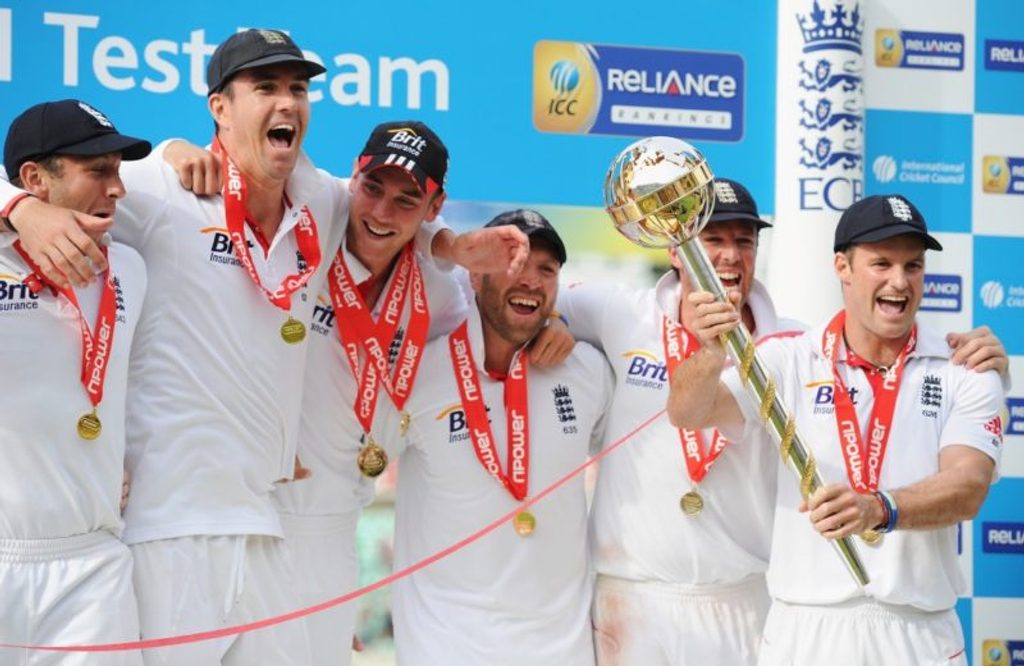 England with the ICC Test Championship mace in 2011, when few Englishmen entered the IPL
England with the ICC Test Championship mace in 2011, when few Englishmen entered the IPL
Let’s face it, the money in the IPL – for a lot of cricketers, not just a handful of them – is more than they can earn by playing in every single T20 league in the world. Even more, it provides unrivalled exposure for young cricketers who are looking to be spotted, making the situation a catch 22 of sorts. While the cricket fraternity chooses to take a bird’s-eye view – advising against the IPL obsession – the parties involved are willing to turn myopic for personal gain, turning this into a society-against individual debate.
***
Is there a sporting tournament in the whole wide world where the matches finish close to midnight every single night for seven straight weeks? The other major impact of the IPL on India is that it has changed the way a regular household functions for those seven weeks every year. The fact that watching the IPL always promises an Indian team or player winning makes it a runaway success. Throw in cheerleaders, starlets, stand-up comedians et al and the mix becomes even more mouth-watering. For two months the entire nation gets into the habit of tuning in at 8pm to get their daily fix of entertainment. The flipside of this arrangement is that when fathers watch TV until midnight every night, it’s rather ambitious to assume that they can keep their kids away from it all the time. Since the IPL has lured a new section of audience comprising housewives, the frequency of food ordered from takeaways increases hugely for those two months. Right now – and this is what happens with change – nobody is able to see the fabric of the country altering for it is happening too slowly, but it is happening for sure. Shifting sleep patterns, work output getting affected and other developments get noticed only when they become a lifestyle.
Currently the IPL is facing a serious credibility crisis, with players accused of spot-fixing and a couple of owners accused of betting on their team’s matches. While the naysayers of the IPL are blaming the tournament for this mess (not always incorrectly), the fact remains that this stems from greed and, unfortunately, greed affects not just every section of society but every country. To blame the IPL for it would be rather naïve, for we have seen players crossing the line in international cricket too. The rich do it and the poor do it. But that doesn’t absolve us of our responsibilities and the tournament organisers must take responsibility for keeping the checks and balances in place. The credibility of the owners, the organisers’ involvement in team on-field operations, player education and strong punishments for anyone who’s found guilty, are a few key areas.
Fortunately for the IPL and quite unfortunately otherwise, the Indian public has shown immense tolerance towards corruption. Not only do they forget the misdeeds but they also forgive the miscreants all too easily. This attitude must not encourage the authorities to brush things under the carpet, for if that were to happen, a great opportunity to cleanse and restore faith would be lost.
As the league runs into its seventh year, a “blame it all on the league” sentiment is becoming stronger by the day. Especially after India’s humiliating 0-8 whitewashes against England and then Australia. The country-versus-club debate is gaining ground, and so is the Test-versus-T20 one. Much has been written and spoken on the issue yet we continue to live in the grey zone, still unsure of whether we like it or not.
The flipside is that the Australians have struggled as much as the South Africans in the recent past. Neither Pakistan nor Sri Lankan cricket is going great guns either. They don’t have a similar league to blame their mess on.
Perhaps it’s time we stop punching the IPL – and detect the defects, iron out the kinks, and allow it a happy space. For we just don’t seem to be able to make up our mind on whether the IPL is a bad package in good wrapping paper or a good package in bad wrapping paper.








